Machine Learning Algorithm to Predict CO2 Using a Cement Manufacturing Historic Production Variables Dataset: A Case Study at Union Bridge Plant, Heidelberg Materials, Maryland
Abstract
:1. Introduction
2. Cement Manufacturing
2.1. Raw Material
2.2. Clinker Production (Pyro-Processing)

2.3. Clinker Grinding into Final Product
2.4. Calcination Process and CO2 Emission
2.5. Literature Review of Cement CO2 Emission Calculation and Prediction for the Cement Industry
3. Materials and Methods
Source of Data in Cement Manufacturing
4. Results
4.1. Preheat Tower Data Analysis
4.2. Kiln Data Analysis
4.3. Preheat Tower and Kiln Systems
5. Discussion
5.1. Current Trend of Dealing with CO2 Emission in the Cement Industry
- By incorporating cutting-edge technology into brand-new cement plants and upgrading existing facilities to achieve higher energy performance levels where practical from an economic standpoint, we can increase energy efficiency. According to the International Energy Agency, increasing energy efficiency in cement production will result in 0.26 GtCO2 or 3% less CO2 emissions globally in the 2DS compared to the RTS by 2050. This equates to 12% of the worldwide cement industry’s current direct CO2 emissions. The energy required to burn cement clinker (about 1700–1800 MJ/t) and the heat required for drying and preheating raw materials together makes up the potential amount of thermal energy required to generate cement clinker;
- Coal is the fuel that is most frequently used, accounting for 70% of the thermal energy used globally to manufacture cement. Together, oil and natural gas make up 24% of the thermal energy required to produce cement globally, while biomass and waste (alternative fuels) make up a little over 5%. To balance the use of carbon-intensive fossil fuels by using biomass and waste materials as fuels in cement kilns in place of conventional fuels to reduce carbon emission biogenic and non-biogenic waste streams that would otherwise be inappropriately disposed of, burned, or transferred to landfills are referred to as “wastes” in this context and can be used as alternative fuels. By using alternative fuels instead of conventional fuels, we can reduce our carbon footprint; the world’s CO2 emissions will be reduced by 0.9 GtCO2, or 12%, by 2050 as compared to the RTS. This equates to 42% of the direct CO2 emissions that the worldwide cement sector now produces;
- Increasing the use of blended ingredients substitutes and expands the market for blended cements, and will help to lower the quantity of clinker needed per ton of cement or every cubic meter of concrete produced. By 2050, lowering the clinker to cement ratio will cut world CO2 emissions by 2.9 GtCO2, or 37%. This is equivalent to 128% of current direct CO2 emissions of global cement production. Fly ash (Type C and Type F), slag cement, and to a lesser extent silica fume are the SCMs most frequently employed in concrete formulations. These materials are leftovers from several industries: Power stations burn coal with fly ash; iron ore is smelted with slag cement; and silicon or ferrosilicon is alloyed with silica fume. Recent years have seen a lot of research on alternative materials, like biochar, that can be utilized as SCM for carbon capture and sequestration in concrete;
- Using emerging and innovative technologies that:
- ∘
- By using energy storage and distribution systems like EHR technology to generate electricity from thermal energy that would otherwise be wasted, the cement industry may assist in the adoption of renewable-based power generation technologies like solar thermal power and contribute to the decarbonization of electricity generation. As a clean energy source, hydrogen has also been investigated.Carbon Capture systems in the cement-making process for long-term sequestration or storage are currently being explored. A new method called carbon capture, utilization, and storage (CCUS) has the potential to lower greenhouse gas emissions from the manufacture of cement. A reasonably pure stream of carbon dioxide from industrial sources is isolated, processed, and then delivered to a place for long-term storage as part of the carbon capture and storage process. The carbon dioxide stream that needs to be caught, for instance, may be produced by burning biomass or fossil fuels. Over the next ten years, advances in technology and legislation are expected to raise the quantity of CO2 gathered by 800 MT. Through 2050, 70–100 projects will be required annually to handle this scale-up. Rapid adoption of the ready-now technology will be required to get there.
5.2. Preheat.STG.3 Cyclone Gas Outlet Temp. [0–900 [°C]]
5.3. Kiln Main Drive Speed Control
6. Conclusions
- By proving that this methodology can be adopted, it can help eliminate the laborious method currently used in calculating the amount of CO2 emitted during cement production. It is important to note that the existing mythology requires multiple calibrations of belt scales which measure the amount of raw material used for the clinker manufacturing, calibration of scales that measure the clinker production, and the calibration of scales that measure the different tonnage of fuel source used. In addition, the thermal heat content of each fuel source must be well documented. All these sets of information are required for the manual input into a large spreadsheet calculator for CO2 emission calculation. The many steps required in the empirical method for calculating CO2 result in possible errors and, therefore, there is always a need for step audits to make sure the values calculated are accurate. Knowing that the two variables needed to achieve the same objectives can be determined using machine learning techniques, existing historical data can be easily utilized to achieve the same results as the empirical technique that requires a lot of manpower. This will help avoid costs that can be allocated somewhere else. The new method also helps us to predict the CO2 ahead of time because the model can interlock with the data source for continuous feed;
- In addition, this study has well established that the two key operational variables with the highest degree of impact on the CO2 emission in cement manufacturing are PRE-HEAT.STG.3 CYCLONE GAS OUTLET TEMP. [0–900 [°C]] and (2) CONTROL FOR KILN MAIN DRIVE SPEED. With this knowledge, the two variables can be experimented in a lab setting to see their impact in real-time to help reduce CO2 emissions and production output. This will require that such a setup will have critical monitoring instrumentations simulating real clinker production seniors. It is important to note that optimizing kiln operations involves a holistic approach, considering multiple parameters to achieve the desired product quality and minimize environmental impacts. Therefore, such experimentation cannot be conducted on the manufacturing plant in real-time since the adverse consequences could be impactful because of the complex reactions that take place.
Author Contributions
Funding
Data Availability Statement
Acknowledgments
Conflicts of Interest
References
- Mahlia, T.M.I. Emissions from electricity generation in Malaysia. Renew. Energy 2002, 27, 293–300. [Google Scholar] [CrossRef]
- Zhang, X.P.; Tan, Y.K.; Tan, Q.L.; Yuan, J.H. Decomposition of aggregate CO2 emissions within a joint production framework. Energy Econ. 2012, 34, 1088–1097. [Google Scholar] [CrossRef]
- Mishra, S.; Siddiqui, N.A. A Review On Environmental and Health Impacts Of Cement Manufacturing Emissions. Int. J. Geol. Agric. Environ. Sci. 2014, 2, 2. [Google Scholar]
- Zimwara, D.; Mugwagwa, L.; Chikowore, T.R. Air pollution control techniques for the cement manufacturing industry: A case study for Zimbabwe. In Proceedings of the International Conference on Computers and Industrial Engineering, CIE, Cape Town, South Africa, 16–18 July 2012; pp. 121–133. [Google Scholar]
- Benhelal, E.; Zahedi, G.; Hashim, H. A novel design for green and economical cement manufacturing. J. Clean. Prod. 2012, 22, 60–66. [Google Scholar] [CrossRef]
- Technical Study Report Number 2008/3; CO2 Capture in the Cement Industry; IEA: Paris, France, 2018.
- IEA 2021 IEA, 202; Cement Tracking Report; IEA: Paris, France, 2021. Available online: https://www.iea.org/reports/cement (accessed on 15 August 2023).
- IPCC/OECD Revised 2006 IPCC Guidelines for National Greenhouse Gas Inventories, Reference Manual; Intergovernmental Panel on Climate Change: Bracknell, UK, 2007.
- Czigler, T.; Reiter, S.; Patrick, S.; Somers, K. Laying the Foundation for Zero-Carbon Cement; MLO: Medical Laboratory Observer; McKinsey & Company: Hong Kong, 2020. [Google Scholar]
- Boakye, K.; Simske, S.; Winters, D.; Eckard, B.; Hook, J.; Hanson, L.; Bridge, U.; Plant, C.; Bridge, U. Improving Kiln Feed Chemistry and Overburden Wasting through Controlled Consistent Quarry Material Mix: A Case Study at Union Bridge Cement Plant. J. Cem. Based Compos. 2022, 4, 5565. [Google Scholar] [CrossRef]
- del Strother, P. Portland Cement: Classification and Manufacture. In Lea’s Chemistry of Cement and Concrete, 5th ed.; ButterworthHeinemann: Oxford, UK; Cambridge, UK; Boston, MA, USA, 2019; pp. 31–56. [Google Scholar]
- Mujumdar, K.S.; Ganesh, K.V.; Kulkarni, S.B.; Ranade, V.V. Rotary Cement Kiln Simulator (RoCKS): Integrated modeling of pre-heater, calciner, kiln and clinker cooler. Chem. Eng. Sci. 2007, 62, 2590–2607. [Google Scholar] [CrossRef]
- Kakali, G.; Tsivilis, S.; Kolovos, K.; Choupa, K.; Perraki, T.; Perraki, M.; Stamatakis, M.; Vasilatos, C. Use of secondary mineralizing raw materials in cement production. The case study of a stibnite ore. Mater. Lett. 2003, 57, 3117–3123. [Google Scholar] [CrossRef]
- Engin, T.; Ari, V. Energy auditing and recovery for dry type cement rotary kiln systems—A case study. Energy Convers. Manag. 2005, 46, 551.e562e. [Google Scholar] [CrossRef]
- Galbenis, C.T.; Tsimas, S. Use of construction and demolition wastes as raw materials in cement clinker production. China Particuology 2006, 4, 83.e85. [Google Scholar] [CrossRef]
- Kabir, G.; Abubakar, A.I.; El-Nafaty, U.A. Energy audit conservation opportunities for pyro-processing unit of a typical dry process cement plant. Energy 2010, 35, 1237.e1243. [Google Scholar] [CrossRef]
- Abdel-Gawwad, H.A.; Heikal, M.; Mohammed, M.S.; Abd El-Aleem, S.; Hassan, H.S.; García, S.V.; Alomayri, T. Sustainable disposal of cement kiln dust in the production of cementitious materials. J. Clean. Prod. 2019, 232, 1218–1229. [Google Scholar] [CrossRef]
- Boateng, A.A. Heat transfer processes in the rotary kiln bed. In Rotary Kilns, 2nd ed.; Boateng, A.A., Ed.; ButterworthHeinemann: Boston, MA, USA, 2016; pp. 173–201. [Google Scholar]
- Mintus, F.; Hamel, S.; Krumm, W. Wet process rotary cement kilns: Modeling and simulation. Clean Technol. Environ. Policy 2006, 8, 112–122. [Google Scholar] [CrossRef]
- Khurana, S.; Banerjee, R.; Gaitonde, U. Energy balance and cogeneration for a cement plant. Appl. Therm. Eng. 2002, 22, 485–494. [Google Scholar] [CrossRef]
- Heat Balance of Kiln and Coolers and Related Topics, Cement Seminar: Comminution Engineering, Process Technology; Holderbank Inc.: Holderbank, Switzerland, 1993.
- Nakhaei, M. Multi-Phase Flow and Fuel Conversion in Cement Calciner; Technical University of Denmark: Lyngby, Denmark, 2018. [Google Scholar]
- Kahawalage, A.C.; Jinadasa, M.H.W.N. Modelling a Cement Precalciner by Machine Learning Methods. In Proceedings of the 62nd International Conference of Scandinavian Simulation Society, SIMS 2021, Virtual, 21–23 September 2021. [Google Scholar] [CrossRef]
- Plou, J.; Martínez, I.; Grasa, G.; Murillo, R. Reactivity of calcined cement raw meals for carbonation. Powder Technol. 2019, 354, 338–347. [Google Scholar] [CrossRef]
- Humphreys, K.; Mahasenan, M. Toward a Sustainable Cement Industry. Substudy, Climate Change; World Business Council for Sustainable Development: Geneva, Switzerland, 2002. [Google Scholar]
- Taylor, H.F.W. The chemistry of Portland cement manufacture. In Cement Chemistry, 2nd ed.; Thomas Telford Ltd.: London, UK, 1997; pp. 55–87. [Google Scholar]
- Satterfield, C.N.; Feakes, F. Kinetics of the thermal decomposition of calcium carbonate. AIChE J. 1959, 5, 115–122. [Google Scholar] [CrossRef]
- Borgwardt, R.H. Calcination kinetics and surface area of dispersed limestone particles. AIChE J. 1985, 31, 103–111. [Google Scholar] [CrossRef]
- Darroudi, T.; Searcy, A.W. The effect of CO2 pressure on the rate of decomposition of lime. J. Phys. Chem. 1981, 85, 3974–3978. [Google Scholar] [CrossRef]
- Khinast, J.; Krammer, G.F.; Brunner, C.; Staudinger, G. Decomposition of limestone: The influence of CO2 and particle size on the reaction rate. Chem. Eng. Sci. 1996, 51, 623–634. [Google Scholar] [CrossRef]
- Valverde, J.M.; Medina, S. Crystallographic transformation of limestone during calcination under CO2. Phys. Chem. Chem. Phys. PCCP 2015, 17, 21912–21926. [Google Scholar] [CrossRef]
- Fernandez, J.R.; Turrado, S.; Abanades, J.C. Calcination kinetics of cement raw meals under various CO2 concentrations. React. Chem. Eng. 2019, 4, 2129–2214. [Google Scholar] [CrossRef]
- Bale, C.; Chartrand, P.; Degterov, S.; Eriksson, G.; Hack, K.; Ben Mahfoud, R.; Melançon, J.; Pelton, A.; Petersen, S. FactSage thermochemical software and databases. Calphad 2002, 26, 189–228. [Google Scholar] [CrossRef]
- Tokheim, L.-A.; Mathisen, A.; Øi, L.E.; Jayarathna, C.; Eldrup, N.H.; Gautestad, T. Combined calcination and CO2 capture in cement clinker production by use of electrical energy. In Proceedings of the 10th International Trondheim CCS Conference, Trondheim, Norway, 17–19 June 2019. [Google Scholar]
- Zheng, L.; Hills, T.P.; Fennell, P. Phase evolution, characterisation, and performance of cement prepared in an oxy-fuel atmosphere. Faraday Discuss. 2016, 192, 113–124. [Google Scholar] [CrossRef] [PubMed]
- Vikstrom, A. Separate Calcination in Cement Clinker Production; DiVA: Laval, QC, Canada, 2021. [Google Scholar]
- Stanmore, B.R.; Gilot, P. Review-calcination and carbonation of limestone during thermal cycling for CO2 sequestration. Fuel Process. Technol. 2005, 86, 1707–1743. [Google Scholar] [CrossRef]
- Hyatt, E.P.; Cutler, I.B.; Wadsworth, M.E. Calcium Carbonate Decomposition in Carbon Dioxide Atmosphere. J. Am. Ceram. Soc. 1958, 41, 70–74. [Google Scholar] [CrossRef]
- Takkinen, S.; Saastamoinen, J.; Hyppänen, T. Heat and mass transfer in calcination of limestone particles. AIChE J. 2012, 58, 2563–2572. [Google Scholar] [CrossRef]
- García-Labiano, F.; Abad, A.; de Diego, L.F.; Gayán, P.; Adánez, J. Calcination of calcium-based sorbents at pressure in a broad range of CO2 concentrations. Chem. Eng. Sci. 2002, 57, 2381–2393. [Google Scholar] [CrossRef]
- L’vov, B.V.; Polzik, L.K.; Ugolkov, V.L. Decomposition kinetics of calcite: A new approach to the old problem. Thermochim. Acta 2002, 390, 5–19. [Google Scholar] [CrossRef]
- Wiedmann, T.; Minx, J. A Definition of ‘Carbon Footprint’. In Ecological Economics Research Trends: Chapter 1; Pertsova, C.C., Ed.; Nova Science Publishers: Hauppauge, NY, USA, 2008; pp. 1–11. [Google Scholar]
- Finkbeiner, M. Carbon footprinting—Opportunities and threats. Int. J. Life Cycle Assess. 2009, 14, 91–94. [Google Scholar] [CrossRef]
- UK Carbon Trust. Carbon Footprinting: An Introduction for Organisations; Carbon Trust: London, UK, 2008. [Google Scholar]
- IPCC/OECD. 1996 IPCC Guidelines for National Greenhouse Gas Inventories, Reference Manual; Intergovernmental Panel on Climate Change: Bracknell, UK, 1997.
- Shen, L.; Gao, T.; Zhao, J.; Wang, L.; Wang, L.; Liu, L.; Chen, F.; Xue, J. Factory-level measurements on CO2 emission factors of cement production in China. Renew. Sustain. Energy Rev. 2014, 34, 337–349. [Google Scholar] [CrossRef]
- Cai, X.; He, Z.; Shao, Y.; Sun, H. Macro- and micro- characteristics of cement binders containing high volume fly ash subject to electrochemical accelerated leaching. Constr. Build. Mater. 2016, 116, 25–35. [Google Scholar] [CrossRef]
- National Development and Reform, Commission (NDRC). Automobile Industry Development Policy. 2004. Available online: http://xwzx.ndrc.gov.cn/xwfb/200506/t20050628_105068.html (accessed on 15 August 2023).
- NDRC (National Development and Reform Commission). 2012[2012-11-10]: Second National Communication on Climate Change of the People’s Republic of China. Available online: http://unfccc.int/resource/docs/natc/chnnc2e.pdf (accessed on 15 August 2023). (In Chinese)
- Liu, S.; Xing, J.; Westervelt, D.M.; Liu, S.; Ding, D.; Fiore, A.M.; Kinney, P.L.; Zhang, Y.; He, M.Z.; Zhang, H.; et al. Role of emission controls in reducing the 2050 climate change penalty for PM2.5 in China. Sci. Total. Environ. 2020, 765, 144338. [Google Scholar] [CrossRef] [PubMed]
- Nguyen, V.G.; Duong, X.Q.; Nguyen, L.H.; Quy, P. Environmental Effects An extensive investigation on leveraging machine learning techniques for high-precision predictive modeling of CO2 emission. Energy Sources Part A Recovery Util. Environ. Eff. 2023, 45, 9149–9177. [Google Scholar] [CrossRef]
- Cho, H.-K.; Lee, H.-S.; Wang, X.-Y.; Ismail, M.; Park, W.-J. Evaluation of CO2 emission–absorption of fly-ash- blended concrete structures using cement-hydration-based carbonation model. Mater. Struct. 2014, 48, 3949–3963. [Google Scholar] [CrossRef]
- Farahzadi, L.; Kioumarsi, M. Application of machine learning initiatives and intelligent perspectives for CO2 emissions reduction in construction. J. Clean. Prod. 2023, 384, 135504. [Google Scholar] [CrossRef]
- Yang, H.; O’connell, J.F. Short-term carbon emissions forecast for aviation industry in Shanghai. J. Clean. Prod. 2020, 275, 122734. [Google Scholar] [CrossRef]
- Niu, D.; Wang, K.; Wu, J.; Sun, L.; Liang, Y.; Xu, X.; Yang, X. Can China achieve its 2030 carbon emissions commitment? Scenario analysis based on an improved general regression neural network. J. Clean. Prod. 2020, 243, 118558. [Google Scholar] [CrossRef]
- Javadi, P.; Yeganeh, B.; Abbasi, M.; Alipourmohajer, S. Energy assessment and greenhouse gas predictions in the automotive manufacturing industry in Iran. Sustain. Prod. Consum. 2021, 26, 316–330. [Google Scholar] [CrossRef]
- Olanrewaju, O.A.; Mbohwa, C. Assessing potential reduction in greenhouse gas: An integrated approach. J. Clean. Prod. 2017, 141, 891–899. [Google Scholar] [CrossRef]
- Hamrani, A.; Akbarzadeh, A.; Madramootoo, C.A. Machine learning for predicting greenhouse gas emissions from agricultural soils. Sci. Total Environ. 2020, 741, 140338. [Google Scholar] [CrossRef]
- Samal, K.K.R.; Panda, A.K.; Babu, K.S.; Das, S.K. An improved pollution forecasting model with meteorological impact using multiple imputation and fine-tuning approach. Sustain. Cities Soc. 2021, 70, 102923. [Google Scholar] [CrossRef]
- Bakay, M.S.; Ağbulut, Ü. Electricity production based forecasting of greenhouse gas emissions in Turkey with deep learning, support vector machine and artificial neural network algorithms. J. Clean. Prod. 2021, 285, 125324. [Google Scholar] [CrossRef]
- Boakye, K.; Winters, D.; Simske, S. Literature review and challenges for the adaptation, implementation of digitization, and data analytics for operational excellence in the cement and aggregate production industry. In Proceedings of the SME Annual Conference & EXPO, Salt Lake City, UT, USA, 27 February–2 March 2022; pp. 1–6. [Google Scholar]
- Gao, T.; Shen, L.; Shen, M.; Chen, F.; Liu, L.; Gao, L. Analysis on differences of carbon dioxide emission from cement production and their major determinants. J. Clean. Prod. 2015, 103, 160–170. [Google Scholar] [CrossRef]
- Padmanaban, R.; Mukesh, R. HadoopSec: Sensitivity-aware Secure Data Placement Strategy for Big Data/Hadoop Platform using Prescriptive Analytics. GSTF J. Comput. (JOC) 2018, 6, 116–121. [Google Scholar] [CrossRef]
- Gang, Y.Z.; Hui, L. Soft sensor for apparent degree of calcination in NSP cement production line. Presented at the 2nd International Conference on Computer and Automation Engineering (ICCAE), Singapore, 26–28 February 2010. [Google Scholar]
- Griparis, M.K.; Koumboulis, F.N.; Machos, N.S.; Marinos, I. Precalcination in cement plants (system description and control trends). IFAC Proc. Vol. 2000, 33, 273–278. [Google Scholar] [CrossRef]
- Yang, B.; Lu, H.; Chen, L. BPNN and RBFNN-based modeling analysis and comparison for cement calcination process. Presented at the Third International Workshop on Advanced Computational Intelligence, Suzhou, China, 25–27 August 2010. [Google Scholar]
- Jin, R.; Chen, Q.; Soboyejo, A. A Statistical Approach to Predicting Fresh State Properties of Sustainable Concrete. EPiC Ser. Built Environ. 2021, 2, 28–36. [Google Scholar]
- Dahish, H.A.; Alfawzan, M.; Tayeh, B.A.; Abusogi, M.A.; Bakri, M. Effect of inclusion of natural pozzolan and silica fume in cement-based mortars on the compressive strength utilizing artificial neural networks and support vector machine. Case Stud. Constr. Mater. 2023, 18, e02153. [Google Scholar] [CrossRef]
- Giustolisi, O.; Laucelli, D. Improving generalization of artificial neural networks in rainfall–runoff modelling/Amélioration de la généralisation de réseaux de neurones artificiels pour la modélisation pluie-débit. Hydrol. Sci. J. 2005, 50, 3. [Google Scholar] [CrossRef]
- Izadifar, M.; Carlo, M.; Upscaling, K.M.C.; Ukrainczyk, N.; Mohammad, K.; Uddin, S. Dissolution of β-C 2 S Cement Clinker: Part 2 Atomistic Kinetic. Materials 2022, 15, 6716. [Google Scholar] [CrossRef]
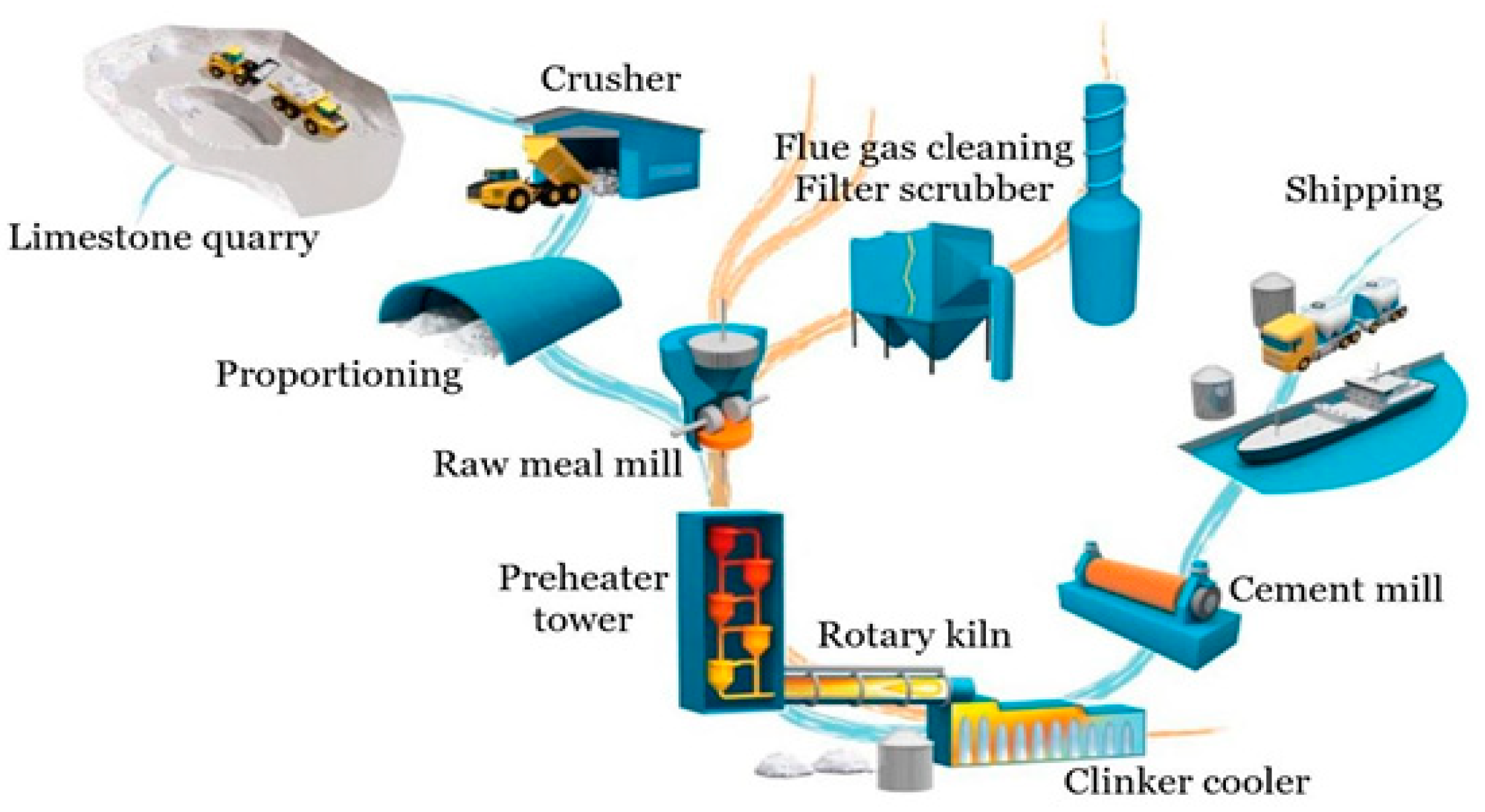

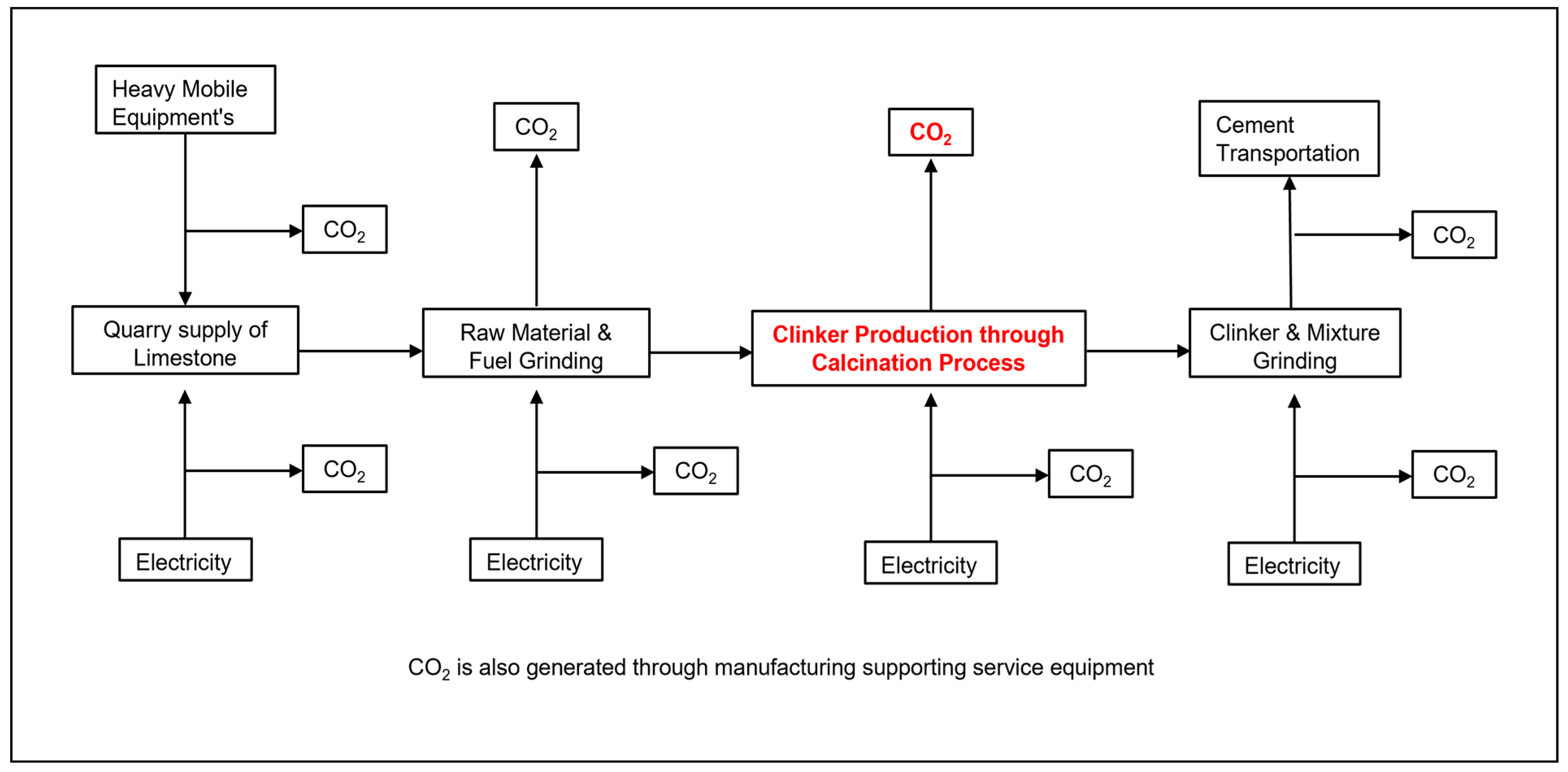
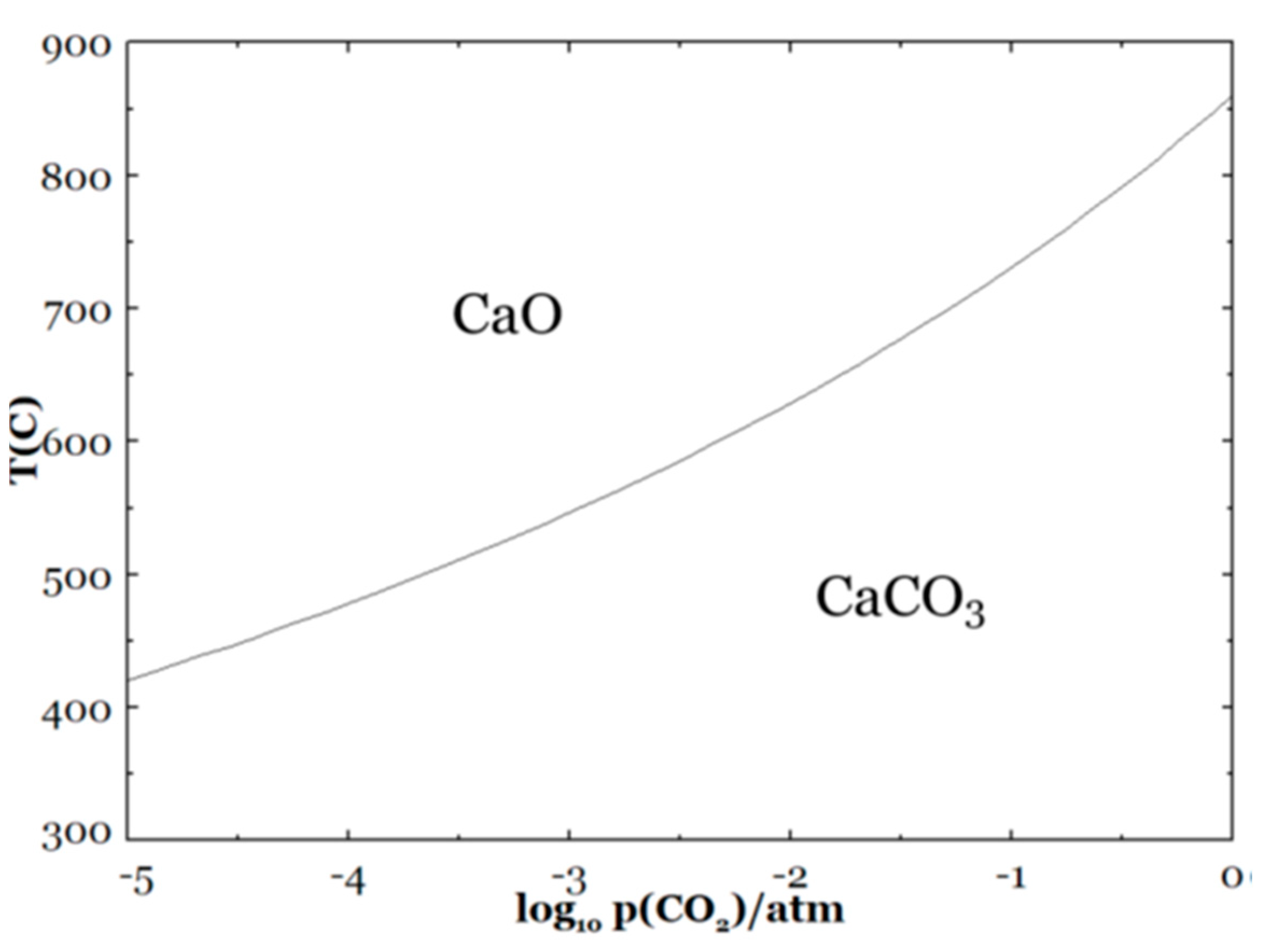
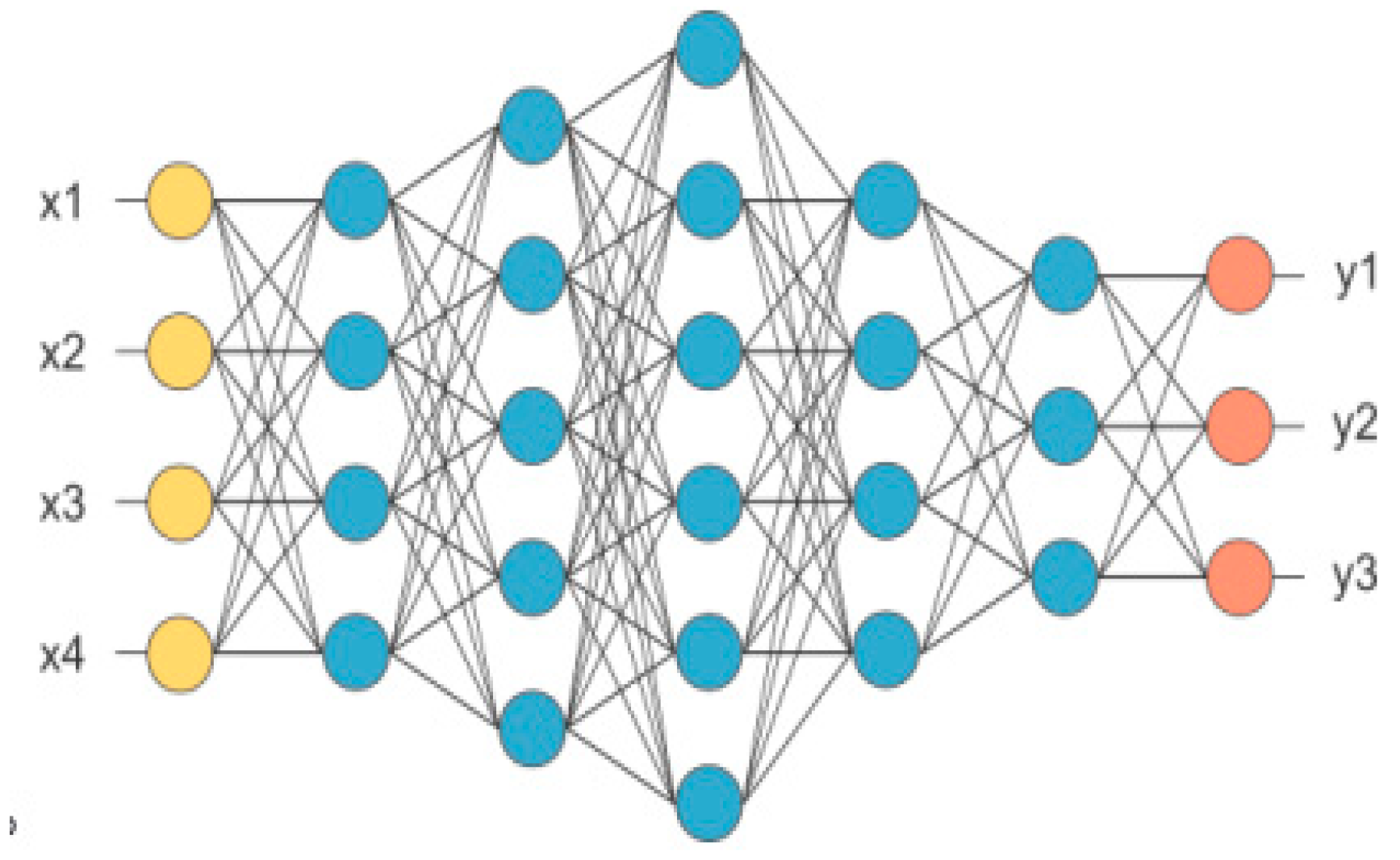
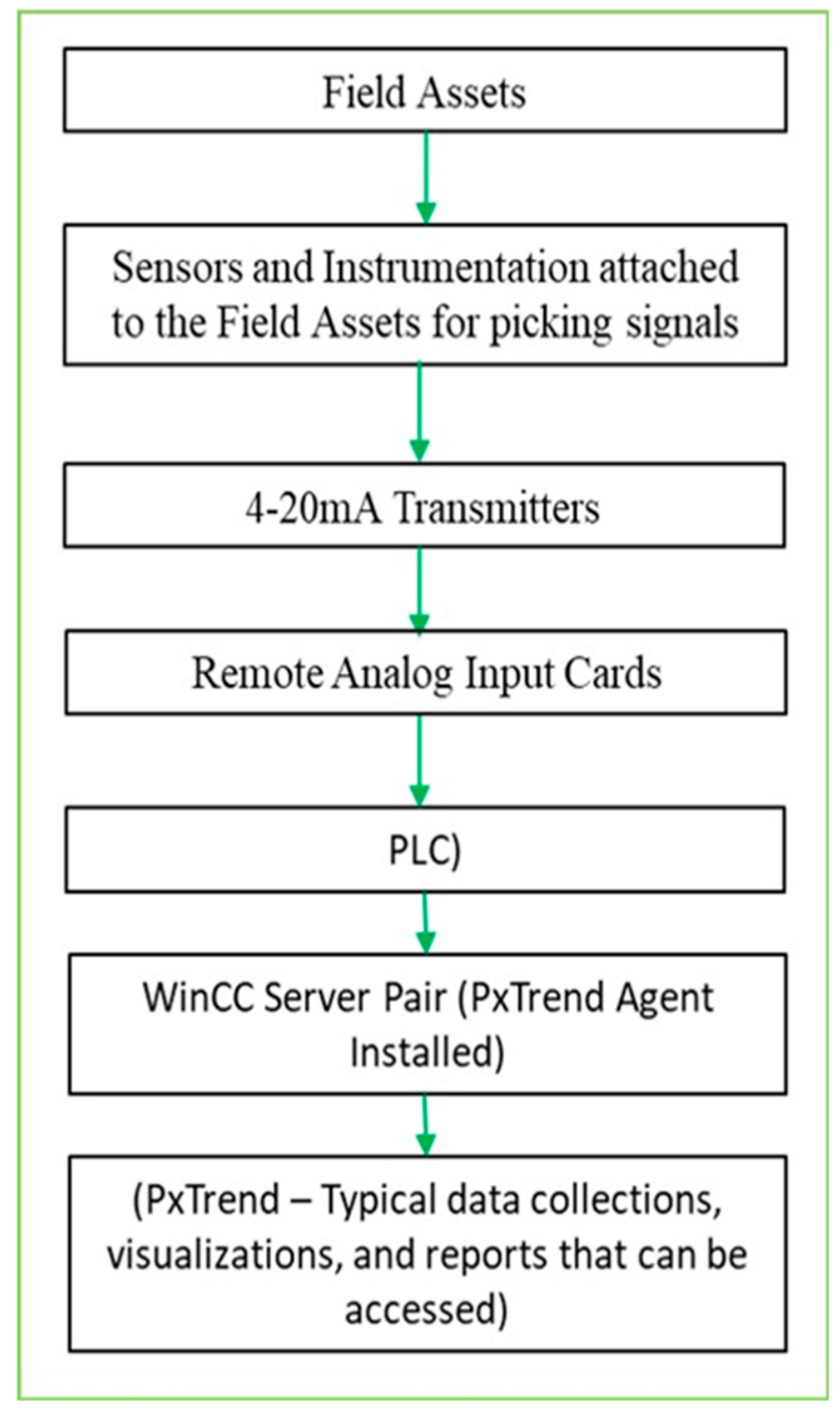
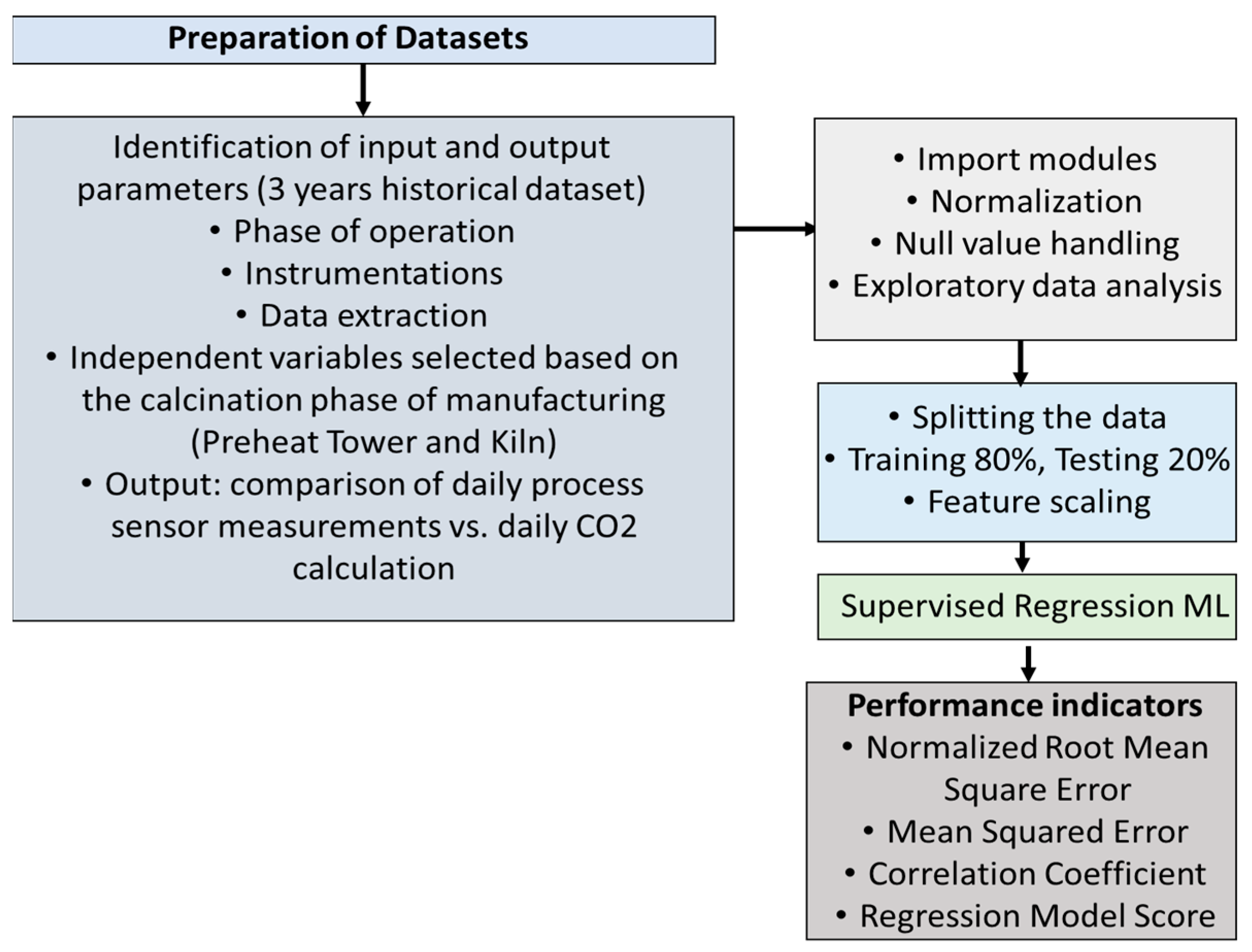

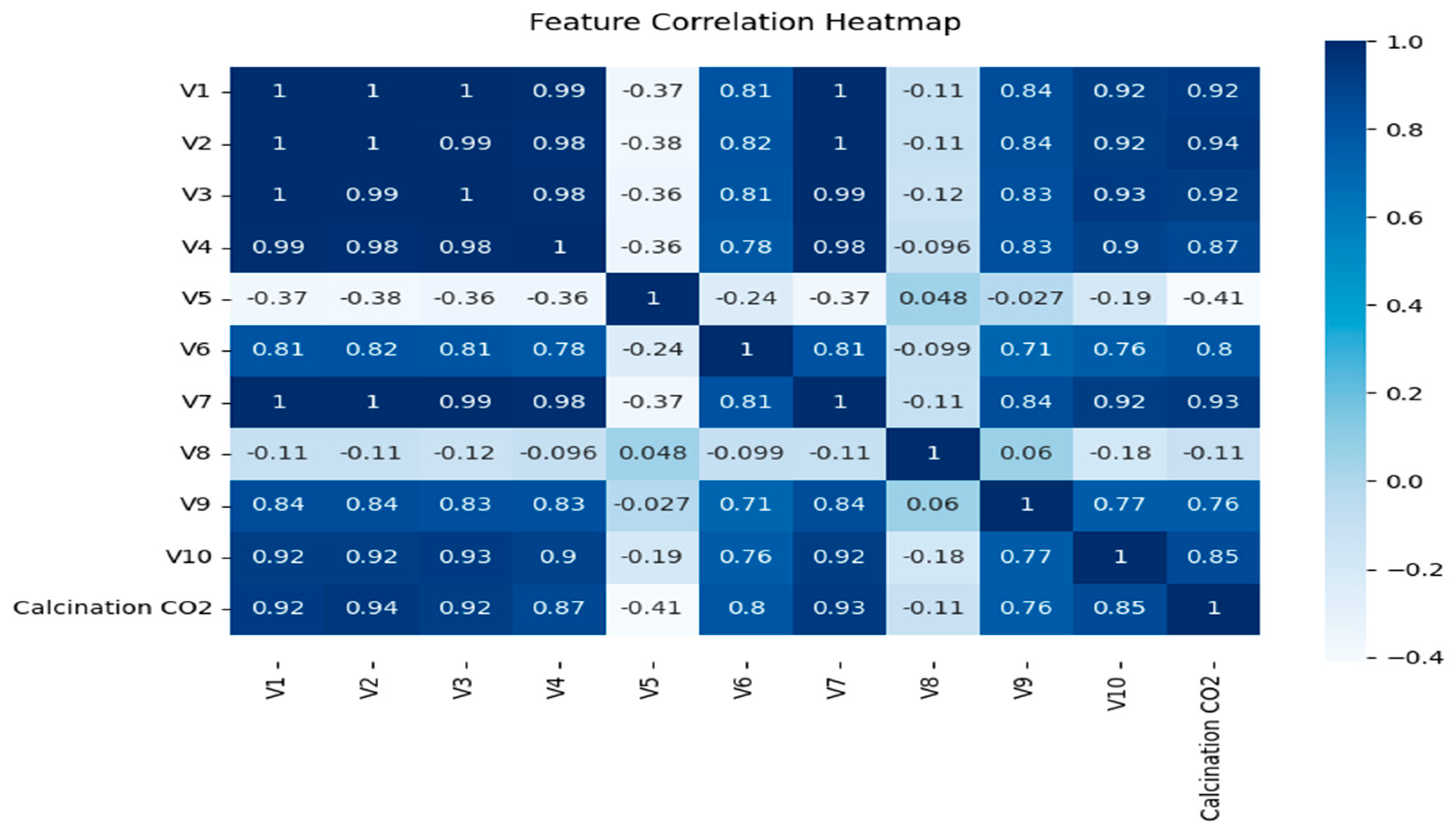
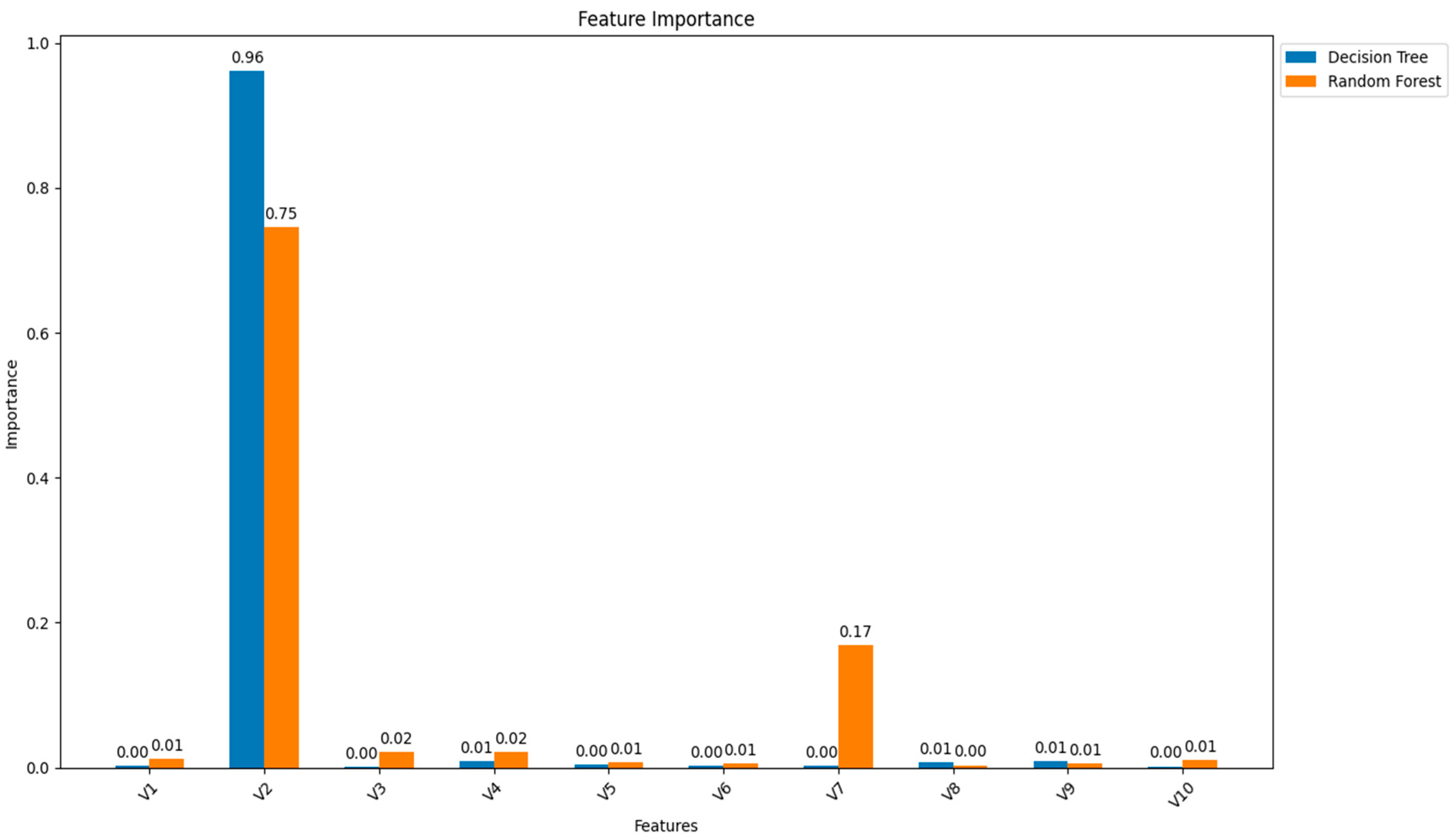

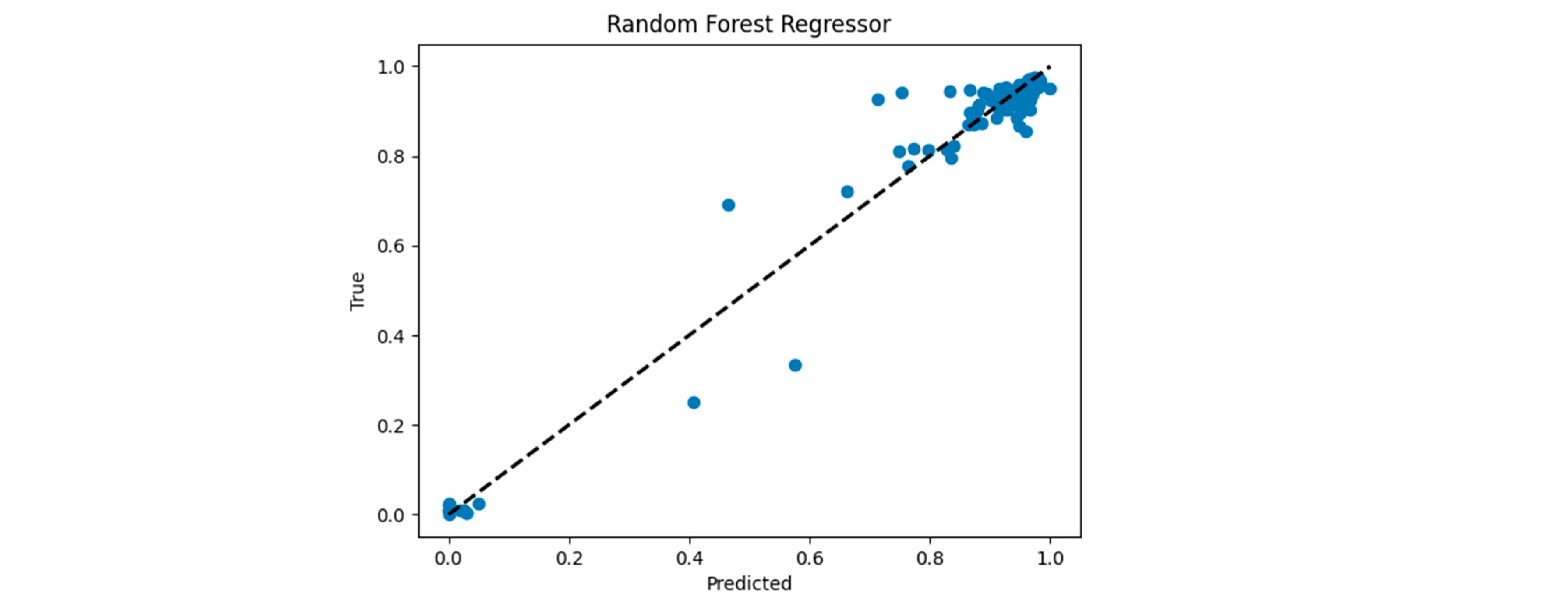

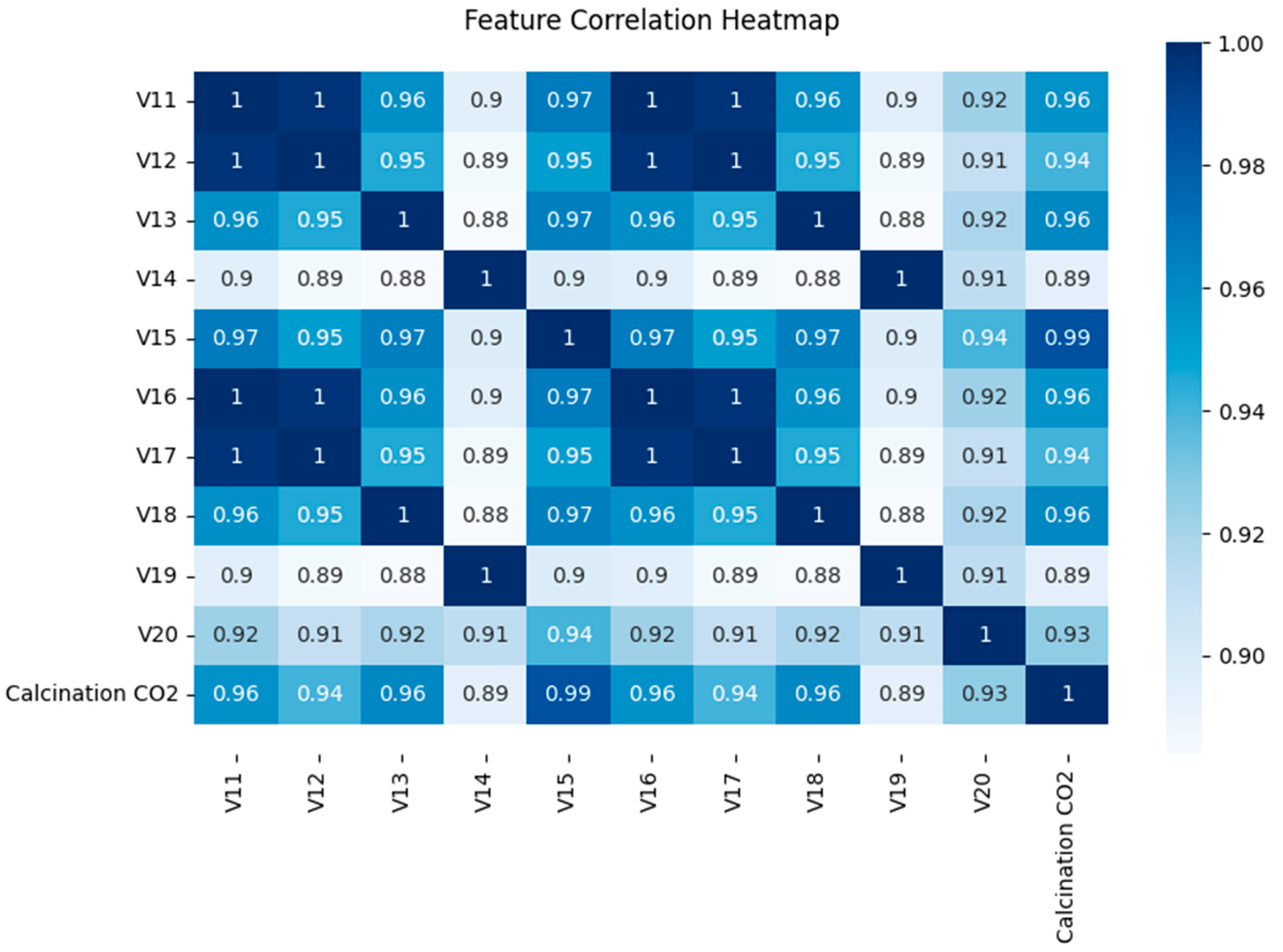
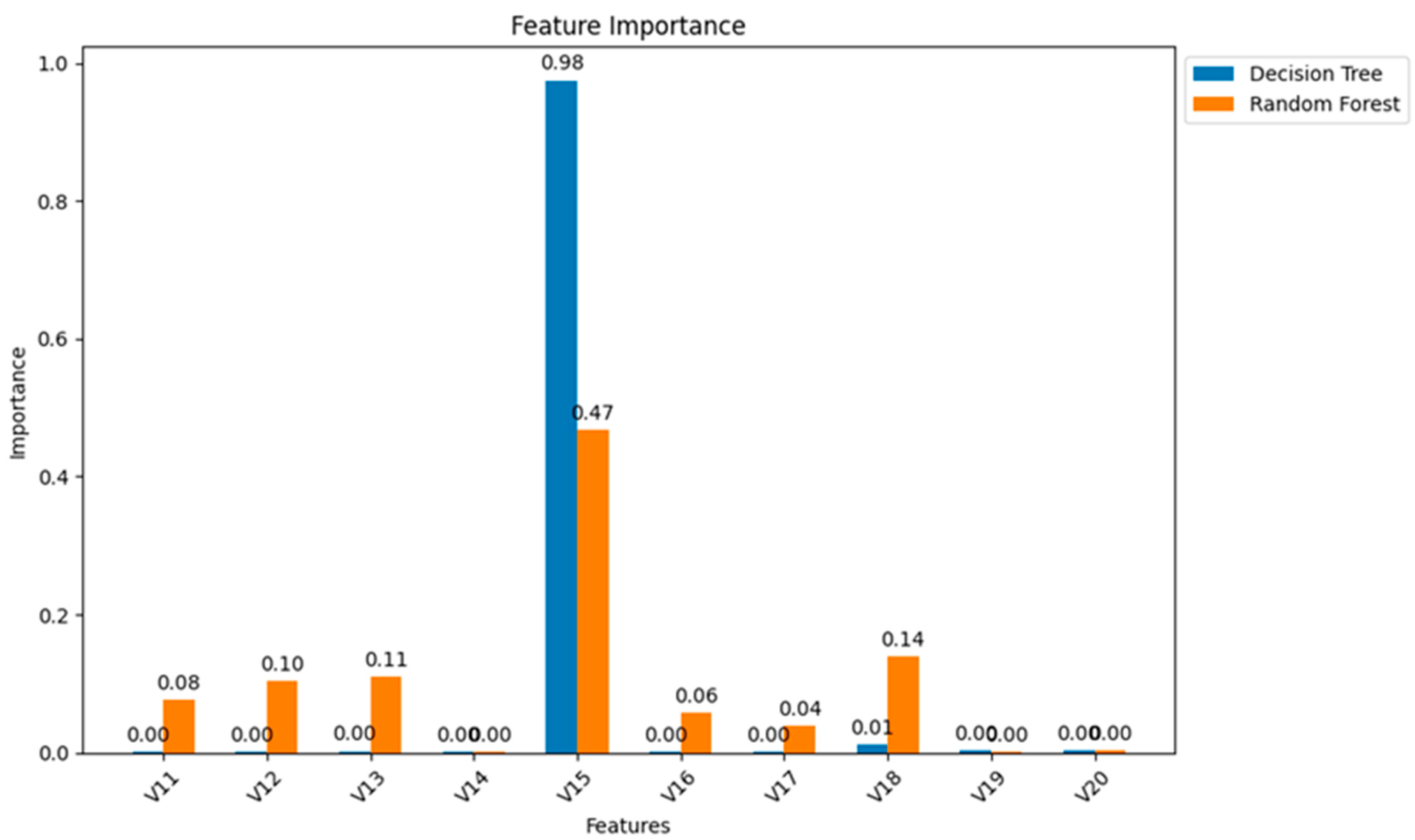

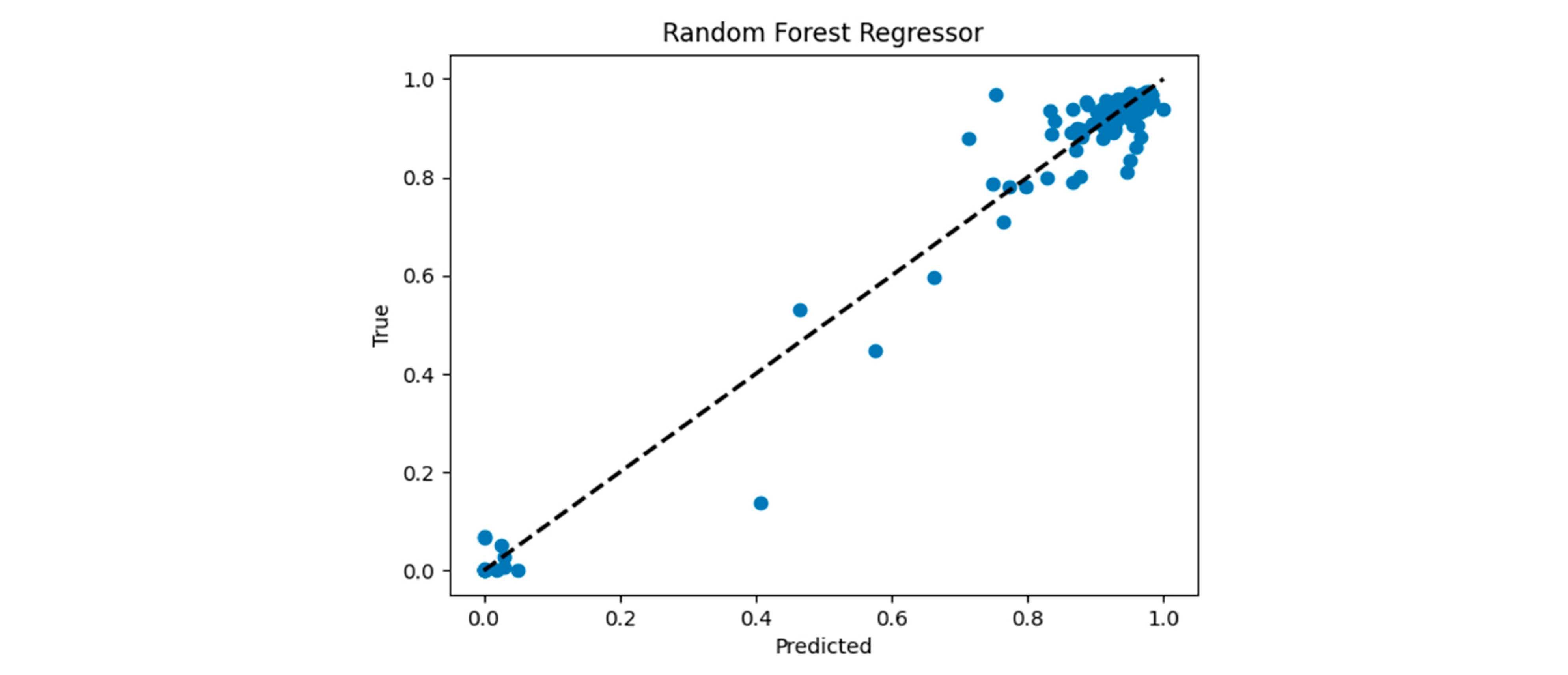
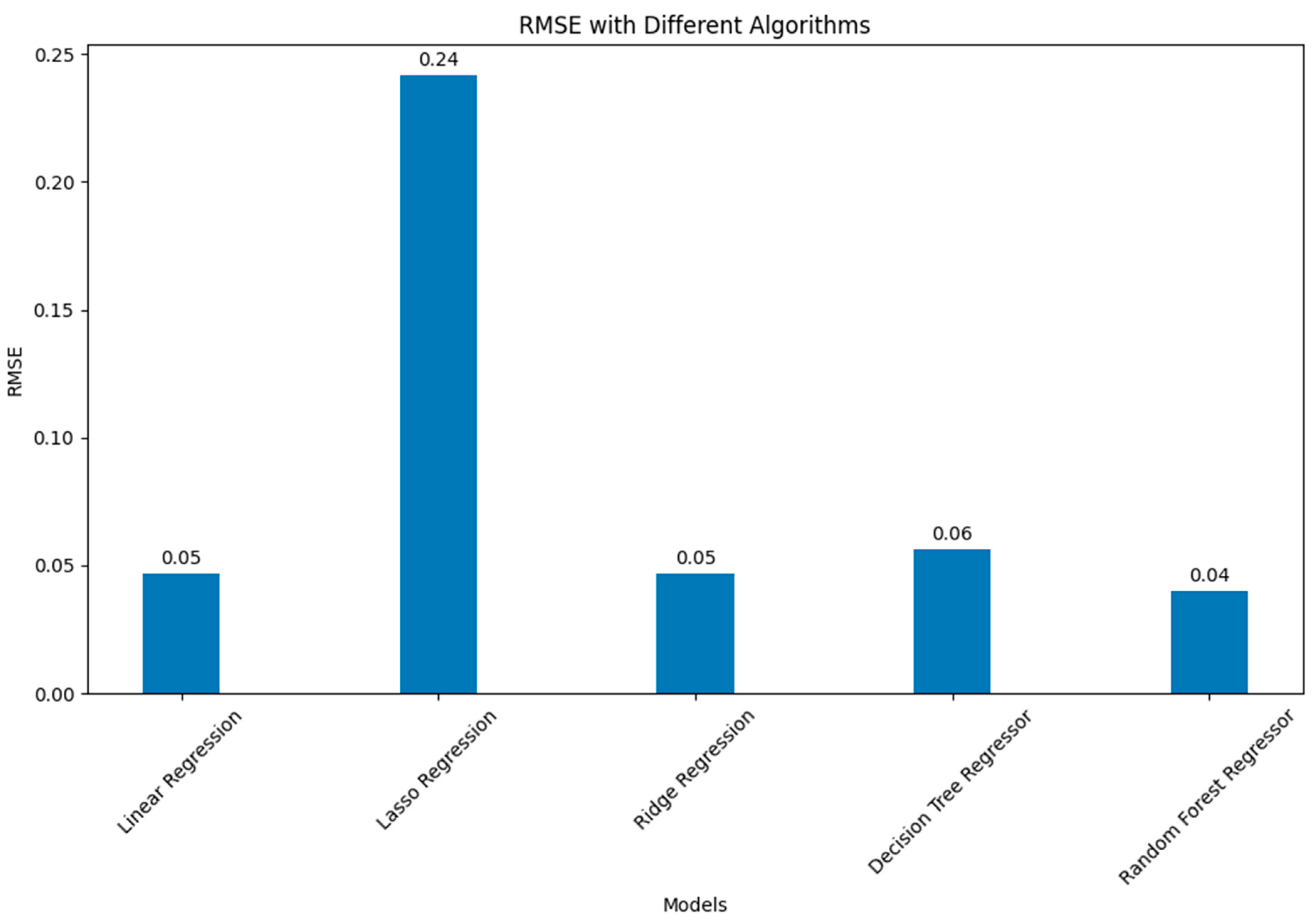
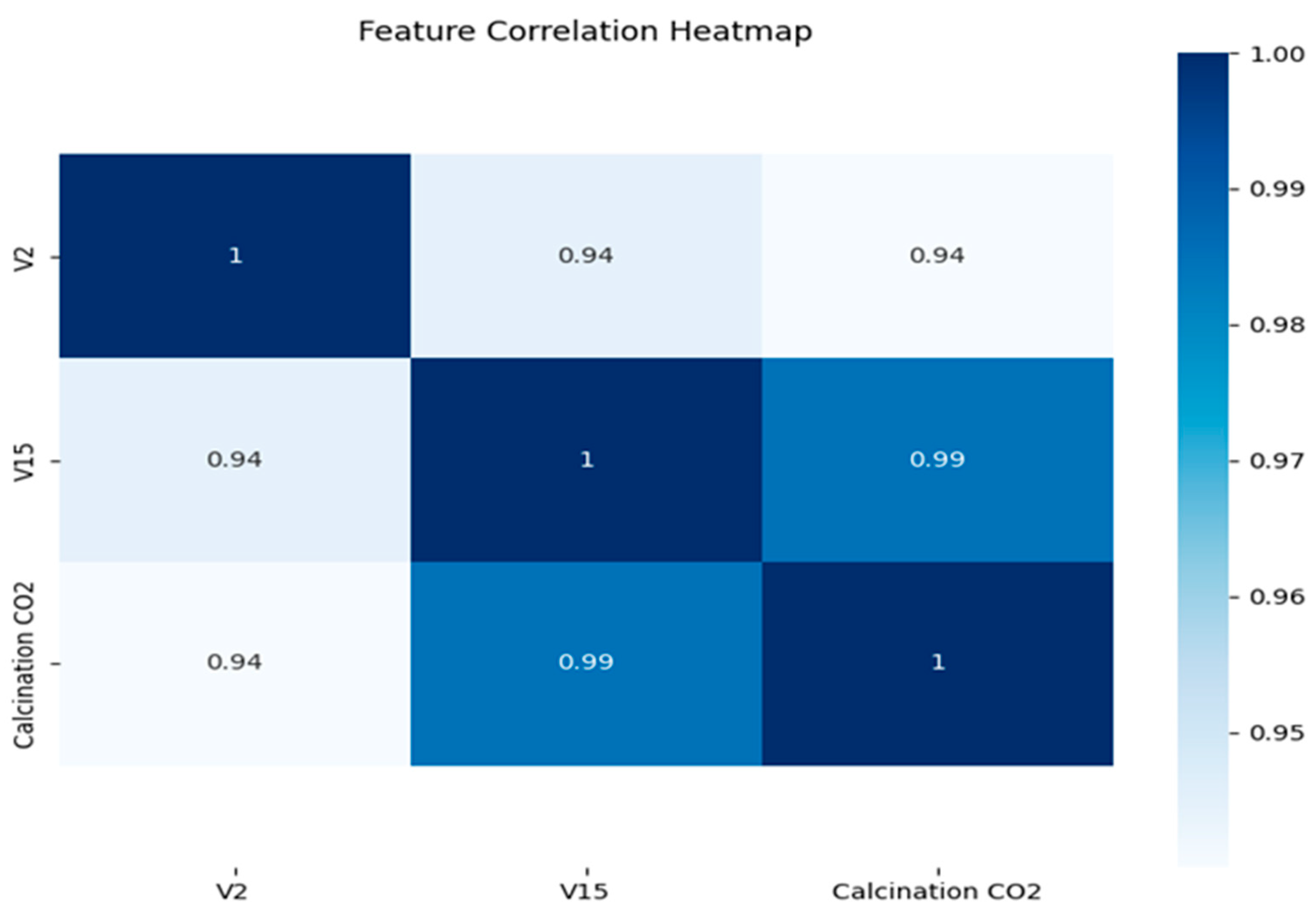
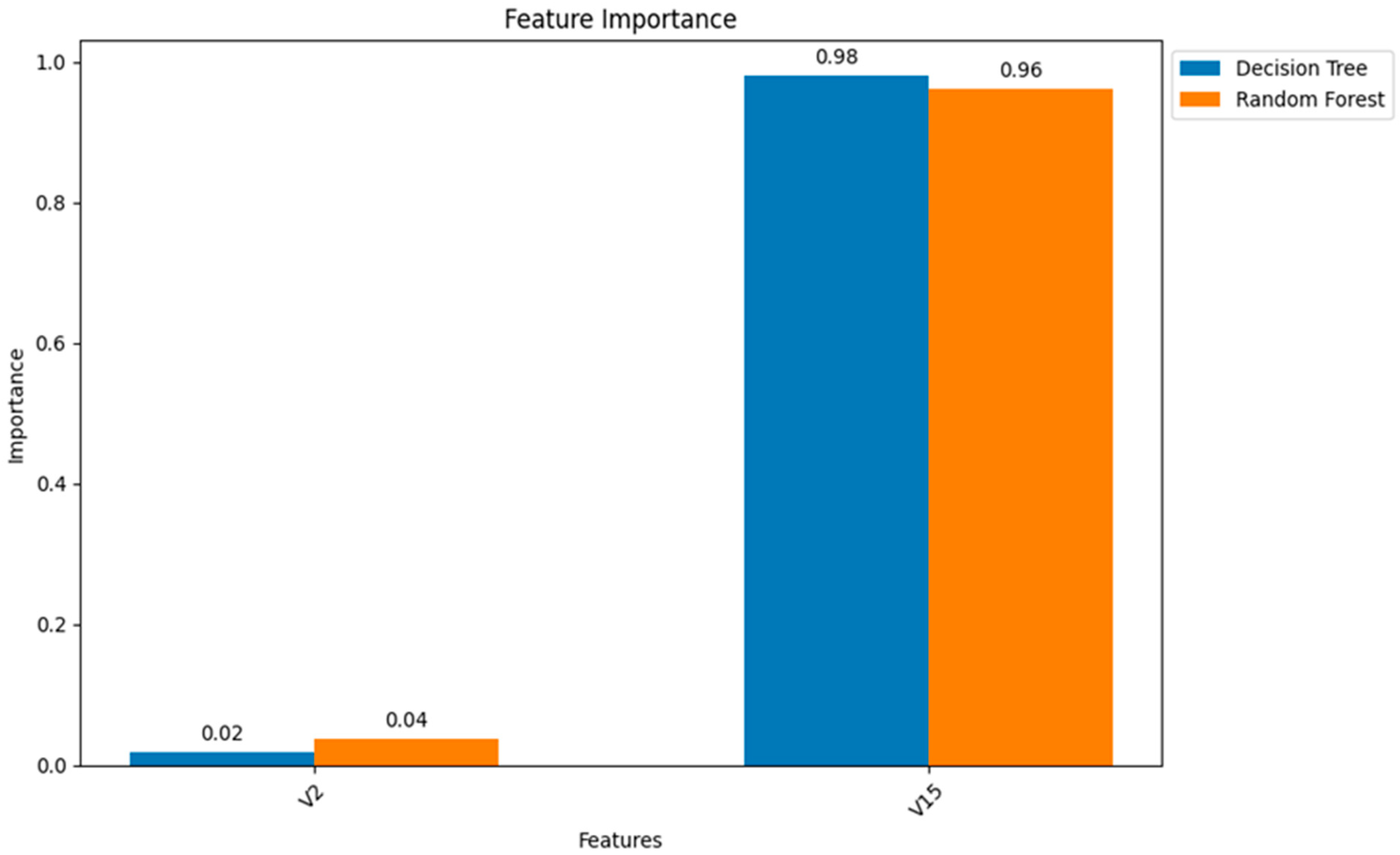
| Ref. | Composition (% wt) | ||||||||||
|---|---|---|---|---|---|---|---|---|---|---|---|
| CaO | SiO2 | Al2O3 | Fe2O3 | MgO | K2O | SO3 | Na2O | H2O | Organics | Loss Ignition | |
| Kakali et al. [13] | 43.11 | 13.76 | 3.23 | 2.45 | 0.55 | 0.28 | 0.00 | 0.00 | 0.00 | 0.00 | 35.42 |
| Engin and Ari [14] | 40.74 | 13.55 | 4.10 | 2.60 | 2.07 | 0.30 | 0.56 | 0.08 | 0.50 | 0.90 | 34.60 |
| Galbenis and Tsimas [15] | 41.95 | 13.55 | 3.31 | 2.55 | 1.98 | 0.41 | 0.00 | 0.00 | 0.00 | 0.00 | 35.12 |
| Kabir et al. [16] | 43.61 | 13.29 | 3.83 | 1.95 | 0.50 | 0.79 | 0.23 | 0.06 | 0.20 | 0.00 | 35.45 |
| Benhelal et al. [5] | 41.51 | 14.03 | 3.39 | 2.54 | 2.59 | 0.57 | 0.30 | 0.24 | 0.00 | 0.00 | 34.83 |
| Reaction Name | Temperature Range (°C) | Reaction | Heat of Reaction (ΔHR) | Location Take Place |
|---|---|---|---|---|
| Decalcination | 550–960 | CaCO3 → CaO + CO2 | +179.4 kJ mol−1 | Preheater, calciner, kiln |
| MgCO3 dissociation | 550–960 | MgCO3 → MgO + CO2 | +117.61 kJ mol−1 | Preheater calciner, kiln |
| β-C2S formation | 900–1200 | 2CaO + SiO2 → β-C2S | −127.6 kJ mol−1 | kiln |
| C3S formation | 1200–1280 | β-C2S + CaO → C3S | +16 kJ mol−1 | kiln |
| C3A formation | 1200–1280 | 3CaO + Al2O3 → C3A | +21.8 kJ mol−1 | kiln |
| C4AF formation | 1200–1280 | 4CaO + Al2O3 + Fe2O3 → C4AF | −41.31 kJ mol−1 | kiln |
| Liquid clinker formation | >1280 | Clinkersol → Clinkerliq | +600 kJ kg−1 | kiln |
| Statistics | V2: Stage 3 Cyclone Gas Outlet Temp | CO2 Generation |
|---|---|---|
| Mean μ | 625.709 | 3271.366 |
| Mean μ (normalized) | 0.847 | 0.823 |
| St. Dev. δ (normalized) | 0.264 | 0.292 |
| Variance δ2 (normalized) | 0.070 | 0.085 |
| Variable | Description |
|---|---|
| v1 | Preheat.stg.2 cyclone gas outlet temp. [0–800 [°C]] |
| v2 | Preheat.stg.3 cyclone gas outlet temp. [0–900 [°C]] |
| v3 | Preheat cyclone 1a meal temp.to stage 3 [0–600 [°C]] |
| v4 | Preheat cyclone 1b meal temp.to stage 3 [0–600 [°C]] |
| v5 | Preheat.stg.4 cyclone cone pressure [−50–5 [mbar]] |
| v6 | Preheat.stg.4 cyclone gas outlet temp. [0–1000 [°C]] |
| v7 | Preheat cyclone 2 meal temp.to stage 4 [0–800 [°C]] |
| v8 | Preheat.stg.5 cyclone cone pressure [−50–5 [mbar]] |
| v9 | Calciner burner liner temp. east [0–1370 [°C]] |
| v10 | Preheat. south loop duct level 170 temp [0–1370 [°C]] |
| Statistics | V15: Kiln Main Drive Speed Control | CO2 Generation |
|---|---|---|
| Mean μ | 3.930 | 3271.366 |
| μ (normalized) | 0.862 | 0.823 |
| δ (normalized) | 0.305 | 0.292 |
| δ2 (normalized) | 0.093 | 0.085 |
| Variable | Description |
|---|---|
| v11 | Kiln main drive current [0–217 [a]] |
| v12 | Kiln main drive torque [0–150 [knm]] |
| v13 | Kiln inlet temperature #1 [700–1600 [°C]] |
| v14 | secondary air temp [0–1370 [°C]] |
| v15 | Kiln main drive speed control [0–100%] |
| v16 | Kiln main drive current [0–217 [a]] |
| v17 | Kiln main drive torque [0–150 [knm]] |
| v18 | Kiln inlet temperature #1 [700–1600 [°C]] |
| v19 | Secondary air temp [0–1370 [°C]] |
| v20 | Tertiary air to preheater temp [0–1200 [°C]] |
| Correlation | Value |
|---|---|
| Preheat.stg.3 cyclone 3a gas outlet pressure | 0.940095 |
| Kiln main drive speed control | 0.985176 |
Disclaimer/Publisher’s Note: The statements, opinions and data contained in all publications are solely those of the individual author(s) and contributor(s) and not of MDPI and/or the editor(s). MDPI and/or the editor(s) disclaim responsibility for any injury to people or property resulting from any ideas, methods, instructions or products referred to in the content. |
© 2023 by the authors. Licensee MDPI, Basel, Switzerland. This article is an open access article distributed under the terms and conditions of the Creative Commons Attribution (CC BY) license (https://creativecommons.org/licenses/by/4.0/).
Share and Cite
Boakye, K.; Fenton, K.; Simske, S. Machine Learning Algorithm to Predict CO2 Using a Cement Manufacturing Historic Production Variables Dataset: A Case Study at Union Bridge Plant, Heidelberg Materials, Maryland. J. Manuf. Mater. Process. 2023, 7, 199. https://doi.org/10.3390/jmmp7060199
Boakye K, Fenton K, Simske S. Machine Learning Algorithm to Predict CO2 Using a Cement Manufacturing Historic Production Variables Dataset: A Case Study at Union Bridge Plant, Heidelberg Materials, Maryland. Journal of Manufacturing and Materials Processing. 2023; 7(6):199. https://doi.org/10.3390/jmmp7060199
Chicago/Turabian StyleBoakye, Kwaku, Kevin Fenton, and Steve Simske. 2023. "Machine Learning Algorithm to Predict CO2 Using a Cement Manufacturing Historic Production Variables Dataset: A Case Study at Union Bridge Plant, Heidelberg Materials, Maryland" Journal of Manufacturing and Materials Processing 7, no. 6: 199. https://doi.org/10.3390/jmmp7060199
APA StyleBoakye, K., Fenton, K., & Simske, S. (2023). Machine Learning Algorithm to Predict CO2 Using a Cement Manufacturing Historic Production Variables Dataset: A Case Study at Union Bridge Plant, Heidelberg Materials, Maryland. Journal of Manufacturing and Materials Processing, 7(6), 199. https://doi.org/10.3390/jmmp7060199








